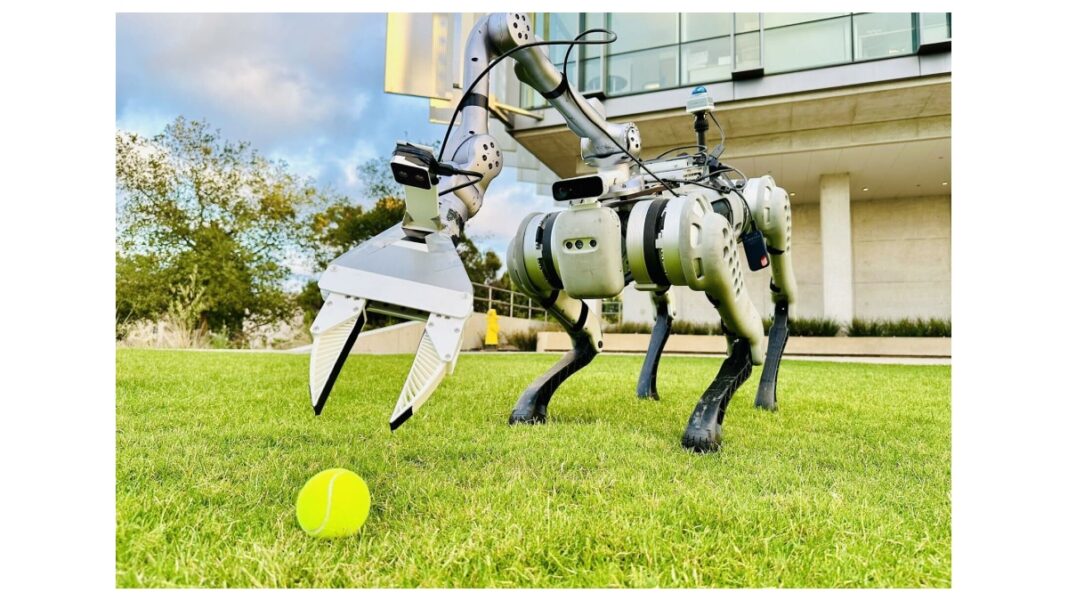The future of robotics just got a whole lot more exciting with the unveiling of the WildLMa framework by a team of researchers from the University of California, San Diego. This innovative framework aims to revolutionize the capabilities of quadruped robots equipped with manipulators, taking them to new heights in performing complex tasks in dynamic and unstructured environments.
The Story So Far:
Imagine a world where robots can seamlessly navigate through cluttered spaces, collect trash, retrieve specific items, and deliver them to designated locations with ease. This is the vision that the researchers behind WildLMa are working towards. By combining locomotion with object manipulation, these robots are set to become indispensable helpers in our daily lives.
Exploring the WildLMa Framework:
The WildLMa framework introduces a fresh approach to training robots for real-world tasks. By incorporating Vision-Language Models (VLMs) and Large Language Models (LLMs), the researchers have paved the way for robots to acquire new skills and tackle complex tasks efficiently. With a focus on skill acquisition and task decomposition, WildLMa is breaking barriers in the world of robotics.
Innovative Features Unveiled:
One of the standout features of the WildLMa framework is its virtual reality-based teleoperation system. This system allows human operators to control the robots with precision using just one hand, simplifying the process of collecting demonstration data. Additionally, the integration of LLMs enables the robots to break down intricate tasks into manageable steps, resulting in seamless task execution.
Real-World Applications and Future Prospects:
Through a series of real-world experiments, the researchers have demonstrated the potential of the WildLMa framework. From clearing hallways to rearranging items, these robots are showcasing their diverse skill set. While challenges such as unexpected disturbances remain, efforts are underway to enhance the robustness of these robots in dynamic environments. The ultimate goal? Creating accessible and affordable home-assistant robots that can make our lives easier.
Conclusion:
The WildLMa framework represents a significant leap forward in the field of robotics, bringing us closer to a future where intelligent robots are a common sight in our homes. With its innovative features and demonstrated capabilities, WildLMa holds the promise of transforming the way we interact with technology. As researchers continue to refine and enhance this framework, the possibilities for robotics are truly endless.
Frequently Asked Questions:
1. How does the WildLMa framework improve the capabilities of robots?
By employing Vision-Language Models and Large Language Models, WildLMa enables robots to acquire new skills and perform complex tasks efficiently.
2. What are some of the key features of the WildLMa framework?
The framework includes a virtual reality-based teleoperation system, pre-trained control algorithms, and attention mechanisms for improved adaptability.
3. What kind of tasks can robots equipped with WildLMa perform?
Robots using WildLMa can perform tasks such as clearing hallways, retrieving deliveries, and rearranging items in dynamic environments.
4. What are some of the challenges faced by the WildLMa framework?
The framework may face challenges in adapting to unexpected disturbances in the environment, such as moving individuals.
5. How does WildLMa aim to enhance the capabilities of home-assistant robots?
The ultimate goal of WildLMa is to create accessible and affordable home-assistant robots that can assist with various tasks in household settings.
6. How does WildLMa streamline the process of task execution for robots?
By breaking down complex tasks into smaller, actionable steps using Large Language Models, WildLMa enables robots to execute tasks more efficiently and intuitively.
7. What sets the WildLMa framework apart from previous robotics training methods?
WildLMa stands out for its innovative use of Vision-Language Models and Large Language Models, which enable robots to learn new skills and adapt to different environments more effectively.
8. How do human operators interact with robots using the WildLMa framework?
Human operators can control robots equipped with WildLMa using a virtual reality-based teleoperation system, allowing for precise and intuitive control with just one hand.
9. What are the potential applications of the WildLMa framework in real-world scenarios?
The framework could be used in various settings, such as household tasks, delivery services, and maintenance operations, where robots need to navigate dynamic and unstructured environments.
10. What are the future prospects for the WildLMa framework in robotics research?
Researchers are focused on enhancing the robustness of the framework in dynamic environments and expanding its capabilities to create more advanced and versatile robots for various applications.
Tags: robotics, WildLMa framework, quadruped robots, manipulation tasks, artificial intelligence

